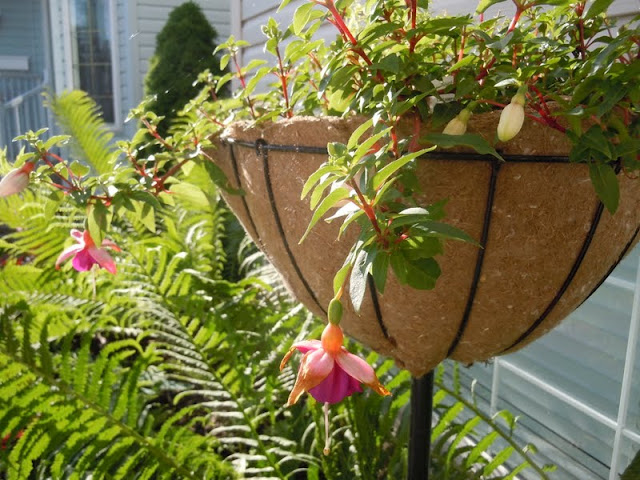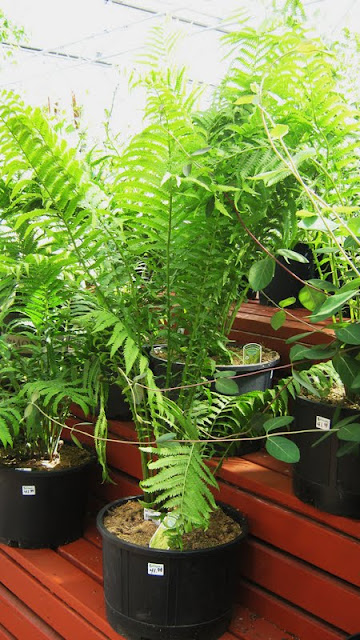
This is the front bed near the entrance. Seen flowering here are shooting stars (dodecatheon). I have a few of these in this bed, some bright pink and some more of a lilac pink. They flower late spring/early summer and then go dormant in the heat of the summer. I love them for their showiness!

To the back yard we go, making a brief stop by the pond and waterfall. Here we see irises in bloom, we have three scatterings of them nearby, and the golden reed has set its heads, for lack of a better word.


This pretty little aquilegia, columbine (perhaps Nora Barlow) set seed in the gravel under the deck, just near the clematis. It's in full bloom right now. Mom I posted this one just for you, remembering your fondness for this little perennial.
This photo should be with the pond photos but cooperation is not something blogger always agrees upon. There you have it, a shot of the same irises with Hakuro Nishiki Willow in the background. This sits on the far side of the pond. I have noted that, of late, people are calling this little willow "dappled willow". Is it because the Japanese name is so difficult to pronounce? Perhaps so.
This willow gives the appearance of flowering from a distance as its new growth is dappled white and green tinged with the slightest of pinks. Quite a pretty shrub that requires a fair bit of water. It is quite happy this year!



A close-up of the irises by the pond (left and above). Below, a German bearded iris and behind, Jackmanii clematis.

Above you can see our wood pile, stored for use in the firepit on those lovely summer evenings. Not intentionally included in the photo, but the irises look good! ;)
A planting of at least three varieties of peony. I like them planted in front of the window well as a masquerade. Behind the fountain are the irises (as seen in above photos), the clematis Jackmanii, and to the right bird's nest spruce and far left corner, Alberta Spruce.
This photo is on the other side of the deck stairs. In front, another bird's nest spruce and behind, Festiva Maxima peony.
Pink Sorbet peony (as seen in above photo by the window well)
Karl Rosenfeld peony. The colour is off and should read more deep red/burgundy. This too is planted by the window well.
I think this is Sarah Bernhart peony? I know there's a bush of them in this bunch.
Festiva Maxima peony (above and below). A glorious fragrant white peony splashed with red. Also seen in the photo above.
A view from inside the house looking out upon the planting of peonies by the window well and deck stairs. I love to sit here at the computer and gaze at these. I also planted some evening scented stock seed nearby, which are about 1 1/2 inches tall at the moment. When they bloom it will be like heaven near this window.
Summer Wine Ninebark shrub is in full flower now.
Snow in Summer is almost in full bloom. Such a pretty little perennial which gradually spreads but is not what I'd call invasive. It is more clumping, in form, gradually growing out from the edges. Snow in Summer loves full sun and well-drained, if somewhat dry, soil.
That's what's blooming in my garden this week. I am linking up with
Tootsie for the Flaunt Your Flowers/Fertilizer Friday meme which she hosts every Friday.
What's blooming in your garden?





















































